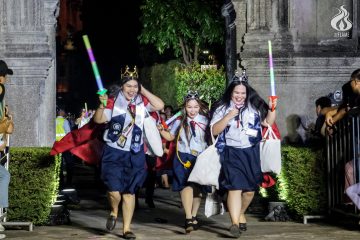
IN 1965, President Diosdado Macapagal signed Republic Act No. 4166, declaring June 12 as the official Philippine Independence Day. While it is commonplace for Filipinos to celebrate the country’s independence on June 12, confusion on the rightful date to celebrate the Independence Day still remains. Was it Aug. 1 or Sept. 9 after several modifications? Or should it be celebrated every July 4—the same date its former colonizer celebrates its own?
One of the most important days in our history changed dramatically over time. What actions in the past contributed to these changes? And do they make any difference?
Emilio Aguinaldo: June 12, 1898
The Philippine Act of the Declaration of Independence or Acta de la Proclamacion de la Independencia del Pueblo Filipino, written by Ambrosio Bautista and signed by 97 Filipinos, was made public on June 12, 1898. On the same day, the emblems of the country’s unity—its flag and national anthem—were introduced to the Filipinos. It was the first time that the Filipinos openly proclaimed independence from all conquering countries.
The old Philippines as a nation: August 1 and September 29
The declaration of independence was ratified and promulgated on Aug. 1, 1898 under Aguinaldo’s government. It was modified again by the Malolos Congress on Sept. 29 of the same year due to Apolinario Mabini’s insistence that the original document stated the Philippines was still under the protection of the United States.
The US Government: July 4, 1946
However, neither Spain nor the United States recognized Bautista’s declaration. In fact, representatives from both countries signed the Treaty of Paris on Dec. 10, 1898, which ceded the country to the United States for 20 million dollars. The United States later decided to officially grant the Philippines its independence through the Treaty of Manila on July 4, 1946—a date that deliberately matched the former’s Independence Day.
Prior to 1964, the nation celebrated its freedom on July 4, while June 12 was hailed as Flag Day, a holiday wherein all establishments should raise and display the national flag.
President Diosdado Macapagal: It was and should always be June 12
Urged by historians and nationalists, Macapagal signed the Republic Act No. 4166, changing the Independence Day from July 4 to the momentous day of June 12. It was during his regime that the Flag Day was moved to May 28—the date when the Philippine Flag was first flown into battle. With Fidel Ramos’ Executive Order no. 179, the festivities for freedom have been extended from Flag Day to Independence Day, advocating all establishments and citizens to honor our sovereignty longer.
The nation only takes note of the date, but one has to sit back and remember why this holiday is celebrated. The fight, the conspiracies and strategies, and the anguish our ancestors experienced to gain our nation’s freedom simply cannot be contained into a day. It can and should not be placed into the category of a simple memorial holiday. In the end, we must know that freedom is the heart of the nation. The date is only a reminder. F CHELSEA JEUSE R. SALGADO
Sources:
- Agoncilio, T. (1990). History of the Filipino People. Quezon City, Philippines: Garotech Publishing
- The Flag Days: May 28 to June 12 | GOVPH. (2014). Official Gazette of the Republic of the Philippines. Retrieved 13 June 2016, from http://www.gov.ph/2014/05/27/the-flag-days-may-28-to-june-12/
- Santos, Hector (1997). By the President of the Philippines, Proclamation No. 28 Declaring June 12 as Philippine Independence. Philippine Centennial Series
- Republic Act No. 4166 | GOVPH. (1964). Official Gazette of the Republic of the Philippines. Retrieved 13 June 2016, from http://www.gov.ph/1964/08/04/republic-act-no-4166/



